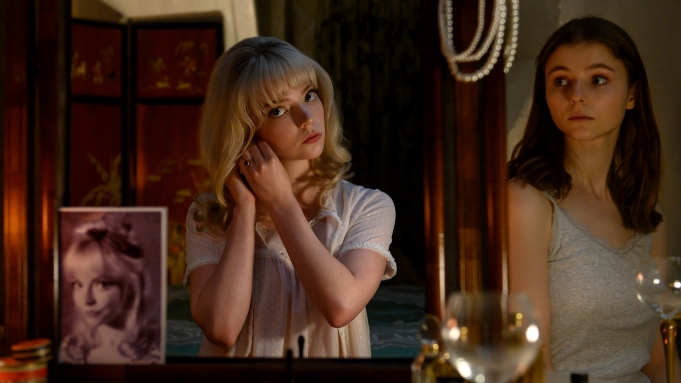Nostalgia Will Kill You in ‘Last Night in Soho’
November 20, 2021
A pop culture savant, Edgar Wright has littered every single one of his movies with references to older music and movies. Characters in Edgar Wright movies slay zombies and drive getaway cars to the pop hits of yesteryear and act out scenes from 80s Actions flicks while trying to solve a small town mystery.
The characters of Edgar Wright find joy and liberation through projecting themselves into movies and songs, but with “Last Night in Soho,” Wright examines the underside to such an obsession. Through “Last Night in Soho” Wright interrogates his own interests and questions the line between a healthy interest in pop culture and a disconnection from reality.
“Last Night in Soho” draws influence from horror movies of the 60s such as “Repulsion” and “Blood and Black Lace,” but they serve a thematic use, instead of just being a winking joke to the audience.
The Characters
Thomasin McKenzie charmingly plays Ellie Turner, a mousy and reserved fashion designer-hopeful, who is introduced buoyantly dancing around to Peter and Gordon’s “A World Without Love.” Her room is a shrine to sixties London, the words CARNABY stenciled on the door and her LP collection includes Cilla Black and The Kinks. Ellie lives in Cornwall with her grandmother before leaving for London to study fashion.
After a run-in with a mean girl roommate, Ellie rents a top-floor flat from an old biddy landlady, played by Diana Rigg, a Swinging Sixties icon, in her final film role. When Ellie goes to sleep on her first night in the flat she dreams of a former occupant of the room named Sandie (Anya Taylor-Joy). Ellie follows along as Sandie makes her way through glamorous 1965 London, catching the eye of talent manager Jack (Matt Smith) and tries to become a singer. The dreams come every single night, and begin to invade Ellie’s waking moments. Are these dreams or something more?
The Lows
“Last Night in Soho” showed tremendous promise, but stumbled in the eleventh hour to tie its many ideas into anything concrete. It strives to comment on misogyny and the danger that women face everyday but nothing is developed beyond a thesis statement.
The ending attempts to bring things to a close happen at such a frenetic pace that it becomes bludgeoning. Wright uses jump scares and other shock tactics as though he would never be able to use them again. The movie gets lost in a CGI soup.
The Highs
The production design and costumes are magnificent, immersing the audience in Swinging London. One can feel the care and passion that went into choosing the clothes that are worn, the pop songs that play over the soundtrack and the London landmarks that the characters visit. It feels like a richer representation than one could get from glancing through a stack of magazines. The salmon-pink dress and white vinyl trench coat worn by Anya Taylor-Joy are destined to become iconic.
Edgar Wright directs “Last Night in Soho” as though it were a musical, with a cheerful, bouncing energy. The movies stand out sequence is Ellie’s first foray into the Swinging Sixties. As Sandie swirls around a nightclub dance club with Jack, we see Ellie reflected in the mirror, and, at times, the women switch places. The camera swoops and glides around the actor’s meticulously choreographed movements. It’s ecstatic, spellbinding filmmaking.
In the end, “Last Night in Soho” is style over substance — but what style!








